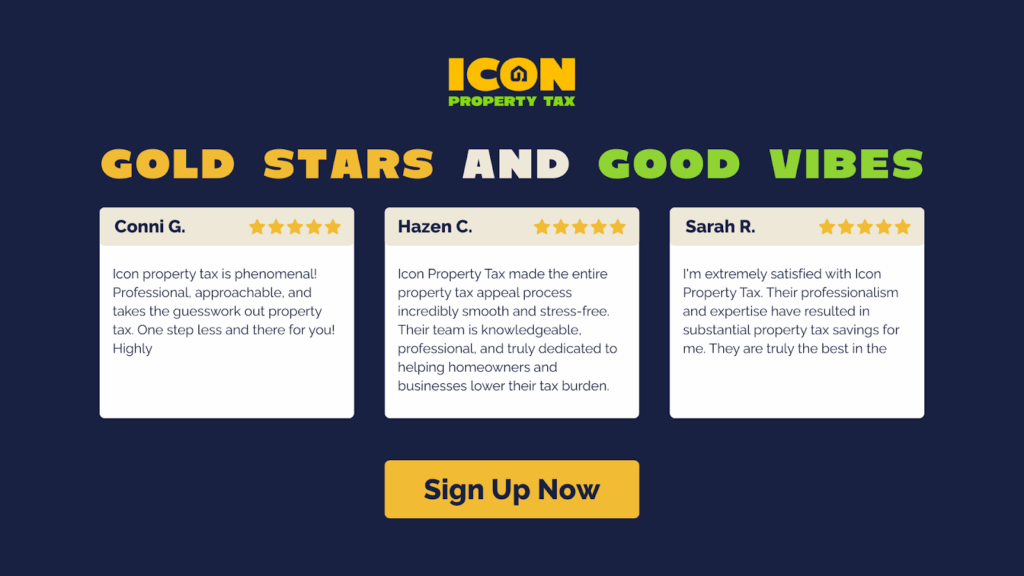Understanding Why Property Taxes Are So High In Texas
September 5, 2025
Key Takeaways:
- Why Texas Relies On Property Taxes: Texas’s heavy reliance on property taxes is due to the absence of a personal income tax, positioning property taxes as the primary funding source for public services.
- The Impact Of Population Growth: Rapid population growth in Texas intensifies the pressure on infrastructure and services, often pushing up property values and tax rates to meet expanding fiscal needs.
- The Role Of Rising Appraised Values: Rising appraised values, driven by the assessment process of local appraisal districts, contribute significantly to the perception of high property taxes, underscoring the importance of understanding and potentially appealing annual assessments.
Many property owners ask why property taxes are so high in Texas. The answer lies in the state’s funding structure and growing demands. Without a state income tax, Texas relies heavily on property taxes to fund schools, public safety, and local services. Add rapid population growth and rising property values, and the pressure intensifies. These factors make it essential for property owners to understand assessments, question valuations, and explore their options for managing the burden effectively.
At Icon, delivering results is at the core of what we do. With over $100 million saved for clients, a 90% success rate, and decades of combined industry experience, our team knows how to identify unfair valuations and fight for reductions. Last year alone, 82% of our clients secured tax savings. With no upfront fees and a performance-based model, we make fighting for fair property taxes accessible and effective.
This blog will explore why property taxes are so high in Texas, the impact of population growth and rising appraisals, and how property owners can respond effectively.

Texas’s Heavy Reliance On Property Taxes Over Income Taxes
Texas is one of the few states without a personal income tax, and this choice shapes how governments generate revenue. Examining the state’s funding structure, local rate setting, and legal restrictions helps explain why property owners feel the impact so strongly.
How The Absence Of Income Tax Shifts The Burden
Most states balance budgets through income, sales, and property taxes. In Texas, property taxes carry the weight. Counties, cities, school districts, and special districts rely heavily on property tax collections to fund education, emergency services, infrastructure, and community resources.
The Disconnect Between Property Values & Income
Rising property values in expanding cities and growing neighborhoods drive up appraisals year after year. Unlike states with income-based taxes, there are no offsets for homeowners whose wages haven’t grown at the same pace, leaving many with larger bills regardless of income.
Local Rate Setting & Population Growth Pressures
Local governments set their own tax rates, but reductions often fail to counter rapid increases in appraised values. At the same time, population growth raises demand for schools, roads, utilities, and public safety, reinforcing reliance on property taxes to meet rising needs.
Constitutional Restrictions On Revenue Options
Texas law restricts the taxes that state and local governments can impose. A constitutional ban on personal income taxes leaves little room for diversification. This framework effectively locks officials into maximizing property tax collections to fund essential services.
Why Property Owners Must Stay Proactive
This system underscores the need for property owners to review annual assessments closely and appeal inflated valuations. Since property taxes remain the backbone of local budgets, understanding your rights and challenging unfair appraisals is essential to avoid overpaying.
Rising Appraised Values: Understanding The Assessment Process
Rising appraisals are one of the biggest reasons property owners ask why property taxes are so high. Analyzing how appraisal districts calculate values and why those numbers continue to rise is crucial to understanding their impact. For many Texans, these assessments feel automatic and unavoidable, but knowing their mechanics reveals meaningful opportunities to respond.
How Appraisal Districts Estimate Property Value
County appraisal districts determine market values yearly using data modeling, inspections, comparable sales, and satellite imagery. These values reflect what a property would sell for under current conditions. Assessments follow as markets grow and home prices rise, often creating year-over-year increases that catch property owners off guard.
Caps On Residential Properties Versus Commercial
Texas limits homestead increases to 10% per year for qualifying primary residences. However, commercial buildings, rental homes, and other non-homestead properties have no such protection, exposing owners to steeper taxable annual hikes. Over time, this difference compounds, creating heavier financial pressure for specific categories of owners.
The Limitations Of Mass Appraisal Methods
Appraisers often rely on automated models and recent sales, without visiting every property in person. This approach may overlook unique property conditions, leading to assessments that don’t fully match the actual characteristics of your home or building. For property owners, these gaps highlight why scrutiny of annual notices matters.
Market Sales That Skew Neighborhood Assessments
A handful of high-dollar transactions in a neighborhood can drive up values for all nearby properties. Even if your home hasn’t been updated, those sales can inflate your appraisal and, by extension, your property tax bill. Understanding how comparables are selected is essential to challenging questionable increases.
Special Considerations For Commercial Properties
Commercial real estate is often appraised by projected revenue rather than physical features alone. When markets shift, income-based valuations can fluctuate significantly, creating unpredictable and sometimes inflated assessments for property owners. These fluctuations demonstrate why monitoring local trends is critical to managing tax exposure.
Why Rising Values Drive Higher Tax Bills
Higher appraised values increase the taxable base even when tax rates remain unchanged. This raises the share each property owner contributes to local funding, intensifying the perception that property taxes are climbing relentlessly. In practice, the valuation is just as influential as the tax rate.
The Importance Of Reviewing Your Assessment
Reviewing your appraisal each year is critical. Understanding how values are set helps you spot discrepancies and build a case for appeal. Taking action empowers you to fight unfair assessments and avoid paying more than necessary, especially when appraisal methods fail to capture your property’s real-world condition.
Breaking Down The Tax Rate: County, City, & Special Districts
To understand why property taxes are so high in Texas, it’s essential to examine how the total rate is calculated. Each property tax bill combines county, city, school, and special district rates, with each authority setting its own portion.
County Taxes & Essential Services
Every property owner contributes a share to the county. These funds cover law enforcement, road maintenance, courts, and public records. With large geographic areas and diverse populations to serve, county budgets often make up a substantial portion of the tax rate.
City Taxes & Local Community Needs
Properties inside city limits are subject to an added layer of city taxes. These revenues fund police, fire protection, parks, libraries, and city government operations. As populations grow, city budgets expand, and rates can shift depending on service demands and economic development priorities.
School District Taxes As The Largest Share
School districts account for the most significant slice of most tax bills. Property taxes pay for staff, facilities, and classroom needs, even for owners without children in local schools. Education budgets are consistently under pressure, leaving school tax rates among the highest components.
Special Districts For Targeted Services
In addition to county, city, and school taxes, many property owners contribute to special districts. These include hospital systems, community colleges, flood control, transit, and neighborhood improvement zones. These targeted rates vary widely and can create multiple line items on a single bill.
How Separate Rates Combine Into One Bill
All taxing entities apply their rates per $100 of appraised value. Each year, local governments adopt rates based on budgets and community votes. The combined total makes Texas property taxes heavy compared to other states, with overlapping jurisdictions driving the final amount owed.

Commercial Versus Residential Assessments: Who Bears The Burden
In Texas, property taxes fund essential local services, from schools and public safety to infrastructure and city operations. To understand why property taxes are so high, it’s essential to examine how appraisal districts value residential and commercial properties, and how those valuations affect the overall tax burden.
How Residential Properties Are Assessed
Residential properties are generally valued using comparable sales data from nearby homes. This approach can create sharp swings in taxable values, especially in fast-growing neighborhoods where prices rise quickly. Homeowners often face sudden increases in their appraisals simply because of a handful of high-priced sales in their area.
How Commercial Properties Are Assessed
Commercial properties are usually appraised based on income-generating potential or replacement costs. While this captures business value, it allows for complex arguments during appeals. Large commercial owners often use legal teams and market data to negotiate significant reductions in their taxable values.
The Shifting Burden Toward Homeowners
As commercial owners secure significant reductions through appeals, the tax burden shifts to residential properties. Over time, individual homeowners shoulder a larger portion of local tax revenue, even when overall tax rates remain unchanged.
The Role Of Texas’s Tax Structure
With no state income tax, Texas depends heavily on property taxes to fund schools and local governments. This reliance magnifies the impact on homeowners, whose bills often grow faster than their income levels, leaving them feeling the pressure of the state’s funding system.
Why Appeals Matter For All Owners
Every property owner, whether residential or commercial, has the right to challenge an appraisal. Appeals backed by data on comparable sales, property condition, or market performance can make a strong case for lowering assessments. Today, even small businesses and individual homeowners increasingly use these tools to push back and protect themselves from paying more than their fair share.
Comparing Texas Property Taxes To Neighboring States
It helps to compare the state’s system with that of nearby states to understand why property taxes are so high in Texas. The differences in funding structures, assessment practices, and exemptions highlight why Texans often carry a heavier burden.
- Texas’s Heavy Reliance On Property Taxes: Texas relies on property taxes as the primary funding source for schools, infrastructure, and local services. Unlike Louisiana, Oklahoma, Arkansas, and New Mexico, Texas does not collect a personal income tax, leaving property owners to shoulder the majority of funding needs.
- Texas Ranks Among The Highest Nationwide: Data from the Tax Foundation and state comptroller offices consistently place Texas in the top 10 for the country’s highest effective property tax rates. Neighboring states offset local budgets with income tax revenues, significantly lowering their property tax burdens.
- Comparisons With Neighboring States: In Oklahoma and Arkansas, state income taxes reduce pressure on local property taxes, resulting in effective rates about half of what Texans face. Louisiana and New Mexico further lower homeowner bills through exemptions and unique valuation strategies that slow rising assessments.
- The Impact Of Annual Appraisals: Appraisal districts in Texas reassess market values yearly, and local budgets are tied directly to these valuations. Tax bills can escalate quickly without strict statewide caps on appraisal increases, especially as real estate values surge in growing communities.
- Caps & Exemptions In Other States: Neighboring states often apply homestead exemptions or appraisal caps to protect owners from sharp yearly increases. These measures give property owners predictability, a protection largely missing in Texas, where districts, schools, and special authorities draw from property tax revenue.
- Local Control & Owner Responsibility: Texas emphasizes local control over property tax rates and appeals. While this allows communities to shape funding priorities, it also requires property owners to remain engaged, review annual appraisals, and take proactive steps through appeals to avoid inflated bills.
- Why Texas Property Owners Pay More: Texas property owners consistently pay higher taxes than those in neighboring states due to the lack of income tax, annual appraisal practices, and overlapping jurisdictions. Actively monitoring assessments and protesting inflated values is critical to protecting against overpayment.

Final Thoughts
Property taxes in Texas can feel overwhelming, especially when you’re left wondering why they’re so high and whether you’re paying more than your fair share. Understanding the reasons behind these valuations is the first step, but real relief comes from taking action. At Icon, we’re committed to transparency, results, and advocating on your behalf so you never overpay for your property taxes.
With our proven, data-driven approach and decades of local expertise, Icon has helped property owners unlock over $100 million in savings, because you shouldn’t have to navigate the appeals process alone. If you believe your property may be overvalued, use our technology-driven platform to look up your address, review insights, and understand your property’s standing before committing to a protest.
The best part? Our performance-based fee structure means you only pay if we win savings, no guesswork, hidden costs, just straightforward advocacy fighting to protect you from overpaying.
Read also:
- Smart Home Buying Strategies To Help You Save Big
- Texas Property Tax Hotspots: Cities With The Highest And Lowest Rates
- Texas Personal Property Tax Guide: What You Need To Know
Frequently Asked Questions About Why Property Taxes Are So High
What factors contribute to high property taxes in Texas?
Texas property taxes are high because the state has no income tax, leaving cities, counties, and schools reliant on property taxes to fund essential services, infrastructure, and community growth.
How are property taxes calculated in Texas?
Property taxes are calculated by multiplying your property’s appraised value by the combined local tax rates. Appraisal districts determine values, and owners can appeal if assessments exceed market value or fair comparisons.
Why doesn’t Texas have a state income tax?
Texas avoids a state income tax due to political choices and constitutional amendments. While attractive for residents and businesses, this increases reliance on property taxes to fund essential services locally.
What is the role of school funding in property taxes?
School districts represent the largest share of Texas property tax bills. Local property taxes primarily fund education, meaning tight budgets or growing enrollment often lead to higher rates or values.
How are local governments funded in Texas?
Local governments rely heavily on property taxes for funding. Cities, counties, school districts, and hospitals depend on these revenues, with sales taxes, fines, and fees contributing a much smaller portion.
Does rising property value affect my taxes?
Yes. Higher property values usually mean higher taxes, even if rates remain unchanged. Appraisal districts base bills on updated valuations, making it crucial to review and appeal inflated assessments regularly.

